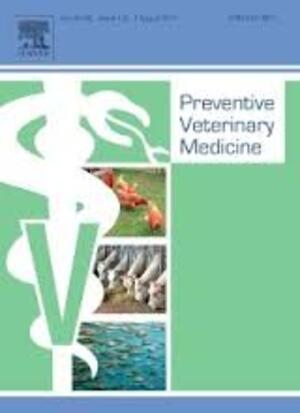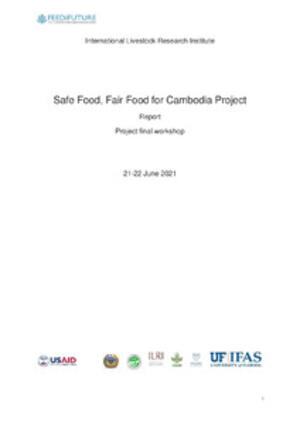
Inter-epidemic Rift Valley fever virus seropositivity in an irrigation scheme in Bura, southeast Kenya
Abstract
Rift Valley Fever (RVF) is an acute mosquito-borne viral zoonosis that causes cyclical epidemics in sub-Saharan Africa, with recent incursions into the Arabian Peninsula. Outbreaks of RVF are associated with above average rainfall and flooding, in which large numbers of vectors emerge. Recent studies into the interepidemic maintenance of RVF virus (RVFV) suggest that both vertical transmission in vectors and direct transmission between hosts, in combination with predisposing ecosystems, are responsible for persistence of the virus. A longitudinal survey was carried out in Tana River County, Kenya, in three ecosystems (irrigated, riverine and pastoral) from September 2014 – June 2015. The objectives of the study were to investigate possibility of low-level RVFV transmission during an inter-epidemic period, to examine variation in RVFV seroprevalence in sheep and goats across these ecosystems and to determine the risk factors for RVFV transmission. 316 small ruminants were selected and tested for immunoglobulin G antibodies against RVFV nucleoprotein using a competitive ELISA during 6 visits. Data on potential risk factors was also captured. The overall RVF virus seropositivity was 12.3% (95%CI = 9%-16.6%) by the end of the study. This varied across the sampling sites with the pastoral ecosystem having a significantly higher seroprevalence at 26.1% (95%CI = 16.6%-38.3%, p<0.05), while the irrigation and riverine areas had lower seroprevalences of 8.6% (95%CI = 4.7%- 14.9%) and 8.3% (95%CI = 4.1%-15.6%) respectively. Increased seropositivity was significantly associated with larger herds (OR=1.93, CI=1.35-2.69, p<0.05). There was no significant difference in seropositivity between animal species and between sexes. Seropositivity varied with age, with younger animals less likely to be seropositive than adults (OR=0.09, p<0.05). Inter-epidemic RVFV transmission was detected as evidenced by 15 seroconversions within the irrigated and riverine villages. The RVF incidence rate (cases per 1000 animals per month) was not significantly different (p>0.05) in the irrigated area (7) and in the riverine area (11). Seroconversions were significantly associated with presence of water either due to rainfall or irrigation (p<0.05). This study indicates that RVFV is circulating in the studied area. It also highlights the risk posed by land use changes, such as the creation and expansion of irrigation schemes, in increasing the risk of inter-epidemic RVFV transmission. This is through provision of necessary environmental conditions for vegetative growth thus providing vectors with more breeding grounds, shade and resting places, which further prolong their lifespans thereby propagating the virus. The findings provide policy makers with the evidence needed for vector and RVF prevention and control within this changing environment.
Citation
Mbotha, D., Bett, B., Kairu-Wanyoike, S., Grace, D., Kihara, A., Wainaina, M., Hoppenheit, A., Clausen, P.-H. and Lindahl, J. 2016. Inter-epidemic Rift Valley fever virus seropositivity in an irrigation scheme in Bura, southeast Kenya. Presented at the first joint conference of the Association of Institutions for Tropical Veterinary Medicine and the Society of Tropical Veterinary Medicine, Berlin, Germany, 4–8 September 2016. Nairobi, Kenya: ILRI.










